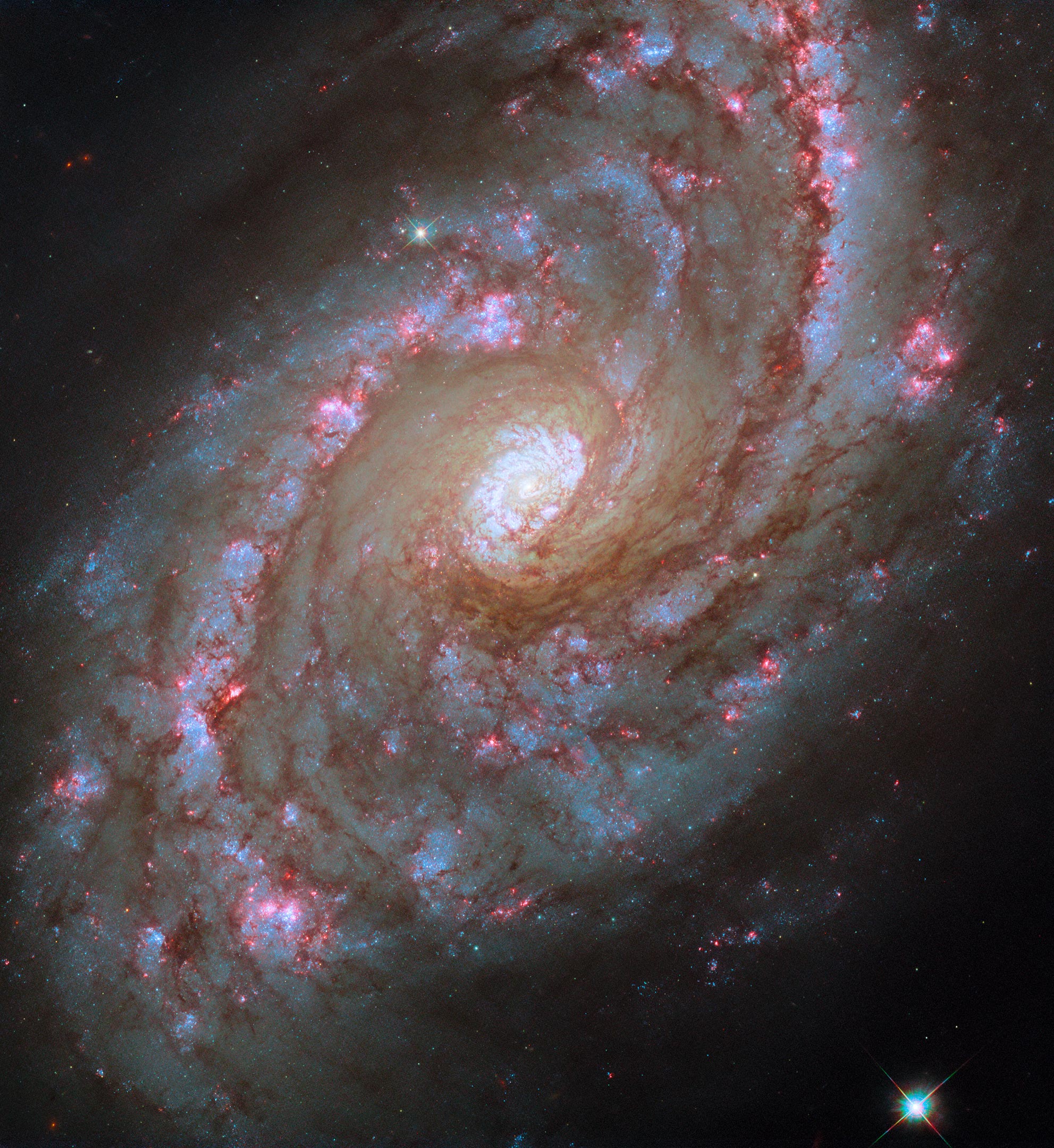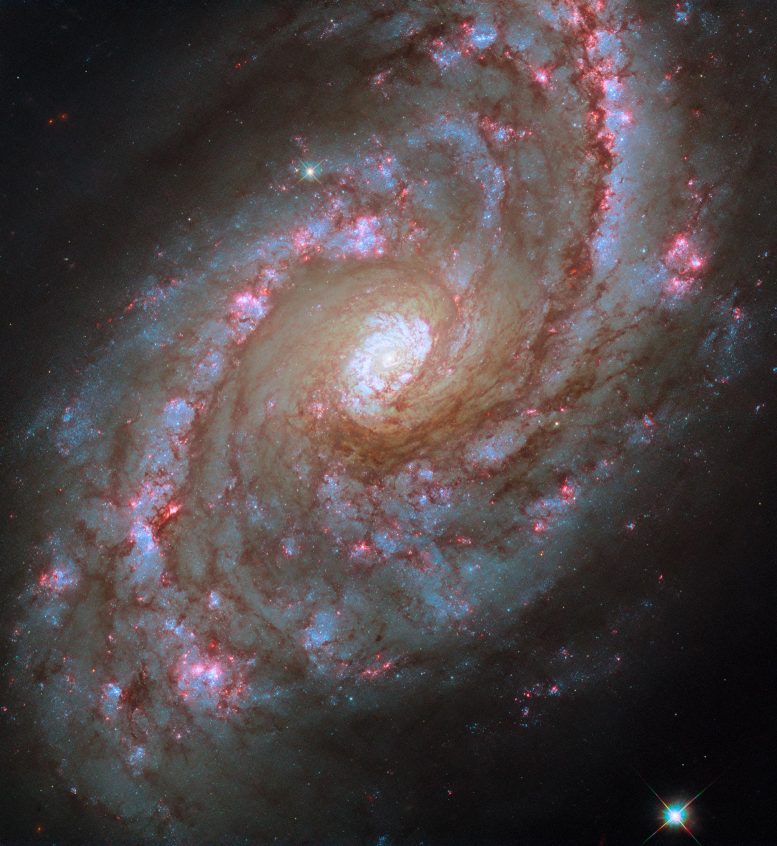

NGC 5248, a spiral galaxy located 42 million light-years away in the constellation Boötes and known as Caldwell 45, showcases a stunning structure with grand design spiral arms and a central bar.
Its intricate gas flows fuel star formation across the galaxy, especially in its dual nuclear rings, making it a fascinating subject for astronomers.
This breathtaking image captured by the Hubble Space Telescope showcases the spiral galaxy NGC 5248, situated 42 million light-years away in the constellation Boötes. Also known as Caldwell 45, this galaxy is listed in a catalog of visually striking celestial objects that, although recognized, are less frequently observed by amateur astronomers compared to the more renowned Messier objects.
NGC 5248 is one of the so-called ‘grand design’ spirals, with prominent spiral arms that reach from near the core out through the disc. It also has a faint bar structure in the center, between the inner ends of the spiral arms, which is not quite so obvious in this visible-light portrait from Hubble. Features like these which break the rotational symmetry of a galaxy have a huge influence on how matter moves through it, and eventually its evolution through time. They feed gas from a galaxy’s outer reaches to inner star-forming regions, and even to a galaxy’s central black hole where it can kick-start an active galactic nucleus.
These flows of gas have shaped NGC 5248 in a big way; it has many bright ‘starburst regions’ of intense star formation spread across its disc, and it is dominated by a population of young stars. The galaxy even has two very active, ring-shaped starburst regions around its nucleus, filled with young clusters of stars. These ‘nuclear rings’ are remarkable enough, but normally a nuclear ring tends to block gas from getting further into the core of a galaxy. NGC 5248 having a second ring inside the first is a marker of just how forceful its flows of matter and energy are! Its relatively nearby, highly visible starburst regions make the galaxy a target for professional and amateur astronomers alike.